As businesses grow, they often face unforeseen challenges that can impede their progress. One significant challenge is the lack of a well-planned network design, especially in cloud environments.
This article will explore the critical importance of network design, the problems that arise from neglecting it, and how a good DevOps or cloud architect can resolve these issues.
What is Network Design?
Network design is the foundation of a cloud infrastructure. It defines how different components of the system interact with each other, and also ensures security and reliability.
Network design involves planning and creating a structured network architecture that meets the needs of a business both in the present and the future. It includes configuring network components such as subnets, gateways, security protocols, and connectivity strategies to ensure seamless communication, security, and scalability.
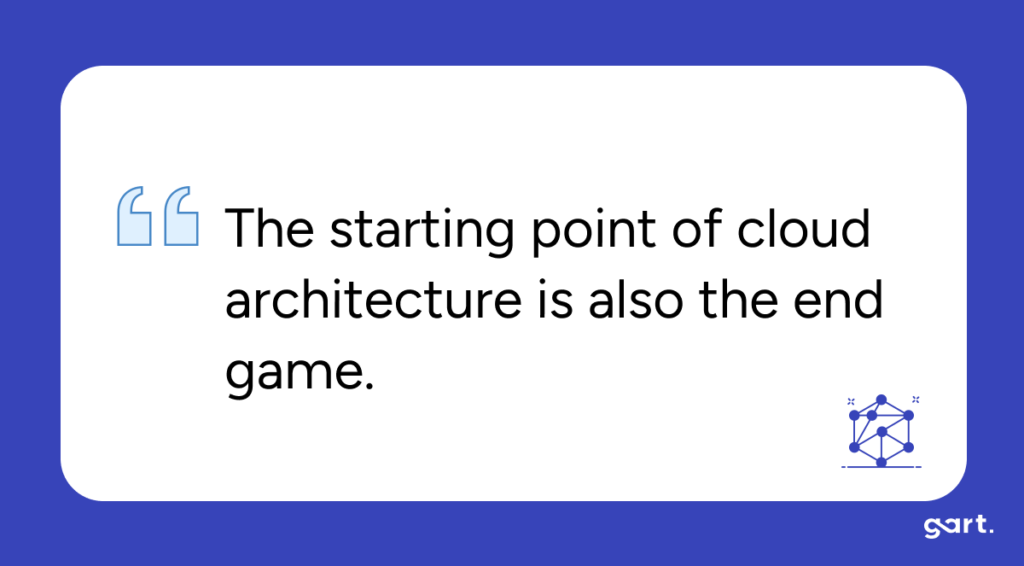
The Consequences of Poor Network Design
One notable example of the consequences of poor network design is Instagram’s early days. The app experienced significant scaling issues due to underestimating network requirements. As Instagram’s popularity skyrocketed overnight, its infrastructure struggled to keep up with the massive influx of users.
Initial Oversights
In small organizations, it’s common to deploy cloud infrastructure without a comprehensive plan. Resources are often added on an ad-hoc basis—servers, storage, databases—without considering long-term impacts. This approach may work temporarily, but it leads to significant issues as the organization grows. Instagram faced similar challenges, where the initial lack of a robust network design led to severe scaling issues as user numbers surged.
Operational Challenges
As the business scales, the lack of a network design becomes evident. When organizations try to separate environments like development, production, and management, they face difficulties. Migration services between networks becomes problematic, often requiring complete reconfigurations or starting from scratch.
Security Risks
Using default networks, like the default VPC in AWS, without understanding the implications, can expose the organization to security vulnerabilities. A well-planned network design includes robust security policies that protect data and applications from potential threats.
Problems Associated with Lack of Network Design
- If the network design is not designed with future growth in mind, it will be difficult to add new resources and expand the cloud infrastructure.
- An unoptimized network design can lead to performance problems such as latency and packet loss.
- The lack of clear network segmentation can make it vulnerable to cyberattacks.
- Moving resources from one network to another can be very difficult if the network design was not carefully planned.
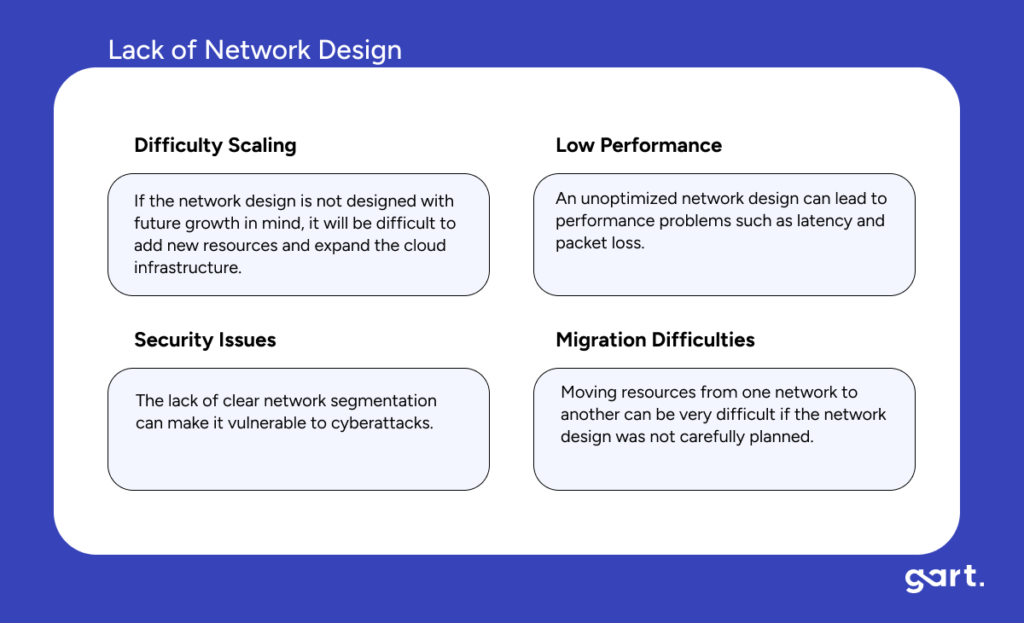
One of our clients, RetailNow, an e-commerce company, experienced rapid growth but overlooked proper network planning. They implemented a single, flat network for all their services, which led to several critical problems
As new services and applications were added, integrating them into the existing network became increasingly difficult. The lack of a structured network design resulted in operational inefficiencies and frequent outages.
The initial network setup wasn’t designed to scale. As RetailNow expanded operations to new regions, they encountered significant issues with network performance and reliability, leading to lost sales and frustrated customers.
The absence of a strategic network design led to increased operational costs. RetailNow had to invest heavily in network redesign and optimization to support their growing business needs.
Common Network Design Mistakes in Business
Here are common mistakes businesses make when creating network designs:
Flat network structure
As mentioned in the RetailNow example, using a single, flat network for all services is a serious mistake. This complicates the integration of new services and leads to performance and security issues.
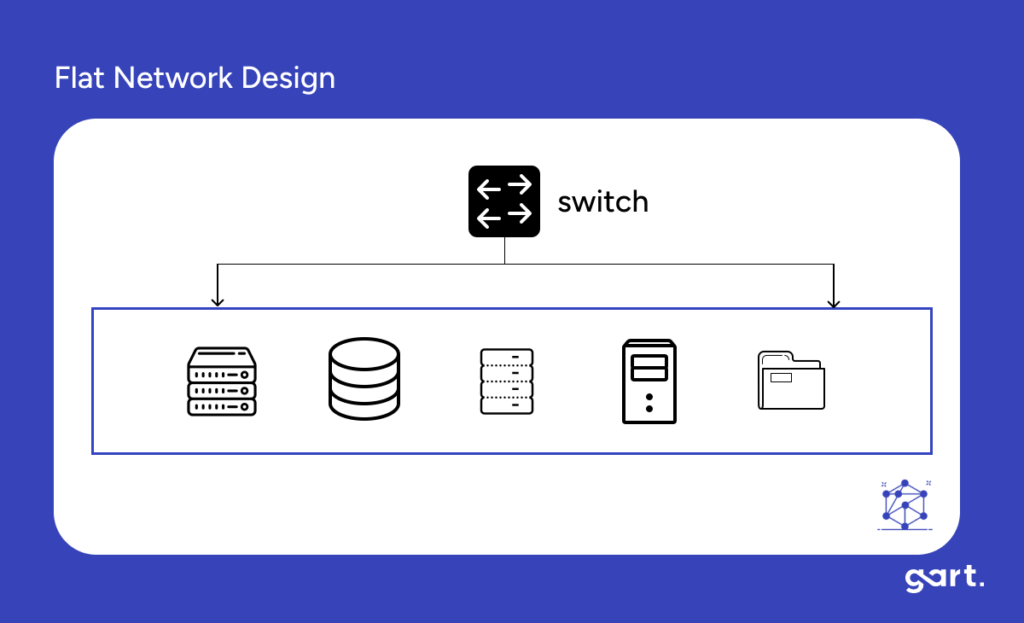
A flat network structure, in short, is a network design where all devices are connected to a single network segment or broadcast domain, without any hierarchical divisions or subnetworks.
Key characteristics of a flat network structure include:
- Single broadcast domain
- No subnets or VLANs
- All devices share the same network address space
- Limited traffic segregation
- Simplified setup but poor scalability
This design is simple to implement for small networks but becomes problematic as the network grows, leading to increased traffic, reduced performance, and security challenges.
Insufficient segmentation
Lack of proper network division into subnets or zones can result in security problems and complicate management.
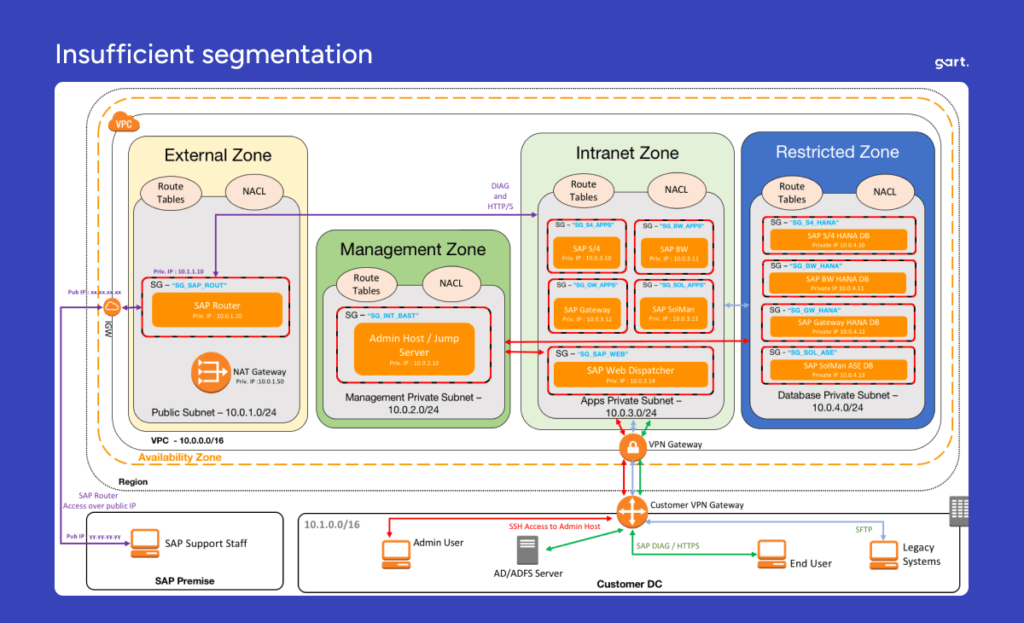
Insufficient segmentation in network design refers to the inadequate division of a network into smaller, distinct subnetworks or segments. Here’s a brief explanation:
Insufficient segmentation is characterized by:
- Too few subnetworks or VLANs
- Overly large network segments
- Lack of logical separation between different types of traffic or user groups
- Poor isolation of sensitive systems or data
Consequences of insufficient segmentation include reduced security due to broader attack surfaces, increased network congestion, difficulty in implementing access controls.
Proper segmentation helps improve security, performance, and manageability of the network by creating logical boundaries between different parts of the network infrastructure.
Ignoring scalability
Failure to design a network that can easily scale leads to problems when expanding the business to new regions or adding new services.
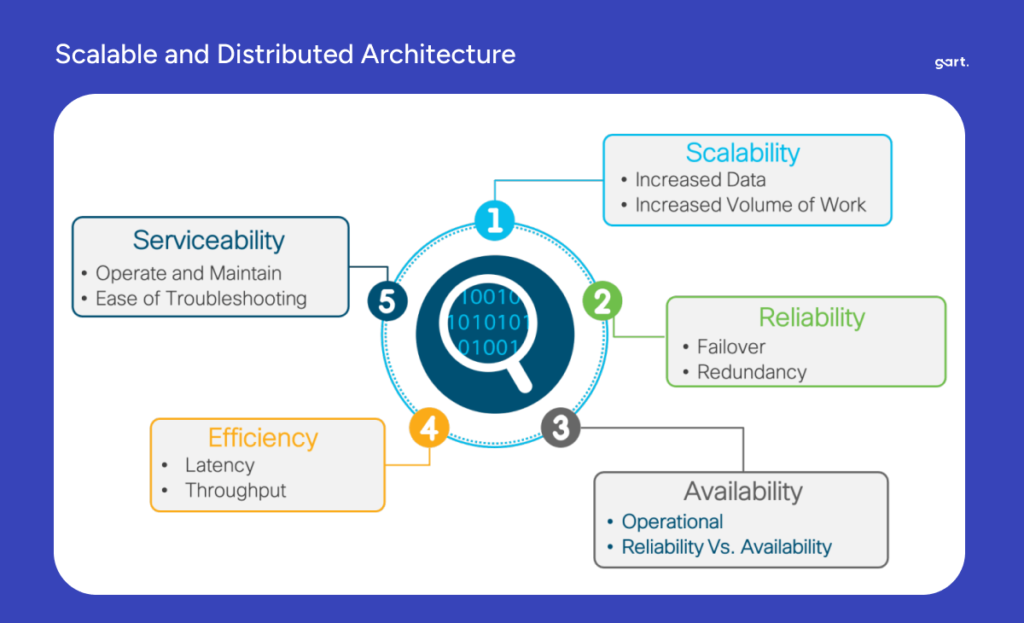
A scalable network design allows for easy expansion, improved performance under increased load, and the ability to adapt to changing business needs without major restructuring.
Ignoring scalability is characterized by designing only for current needs without considering future expansion, using inflexible network architectures, choosing hardware or software solutions that can’t easily accommodate growth, etc.
Consequences of ignoring scalability include:
- Network performance degradation as user numbers or data traffic increase
- Difficulty in adding new services or applications
- Costly and disruptive network redesigns or overhauls
- Inability to expand to new geographic locations or integrate with other networks
- Limitations on business growth due to network constraints
Suboptimal topology
Not using efficient topologies, such as hub-and-spoke, can complicate management and reduce network efficiency. Suboptimal topology in network design refers to the inefficient or ineffective arrangement of network components and their connections.
Examples of suboptimal topologies:
- Overuse of hub-based networks instead of more efficient switch-based designs.
- Daisy-chain configurations that create long, vulnerable paths without redundancy.
- Flat networks without proper hierarchical structure, leading to broadcast storms and security issues.
- Overly complex mesh networks that are difficult to manage and troubleshoot.
Consequences of suboptimal topology:
- Reduced network performance and user experience
- Higher operational costs due to inefficient use of resources
- Increased vulnerability to network outages
- Difficulty in implementing effective security measures
- Challenges in network expansion and adaptation to new technologies
- Complications in troubleshooting and resolving network issues
To avoid suboptimal topology, network designers should consider:
- Implementing hierarchical designs (core, distribution, access layers)
- Using efficient topologies like hub-and-spoke for wide area networks
- Incorporating redundancy and load balancing
- Designing for scalability and future growth
- Optimizing traffic flow based on application requirements
- Balancing between centralized and distributed network functions
Lack of centralized management
Failing to consider the need for centralized network management can lead to operational inefficiencies and security issues. Characteristics of lack of centralized management:
- Decentralized control: Network components and services are managed independently, without a unified approach.
- Multiple management interfaces: Different tools or platforms are used to manage various parts of the network.
- Inconsistent policies: Security, access, and configuration policies may vary across different network segments.
- Limited visibility: No single point of oversight for the entire network infrastructure.
- Manual processes: Reliance on manual configuration and updates rather than automated, centralized solutions.
Implementing centralized management often involves deploying network management systems (NMS) or software-defined networking (SDN) solutions that provide a single pane of glass for network operations. This approach allows businesses to more effectively manage their network infrastructure, improve security, and respond more quickly to changing business needs.
More Network Design Mistakes:
- Neglecting security: Insufficient attention to implementing robust security policies and firewalls makes the network vulnerable to attacks.
- Insufficient connection planning: Poor planning of connections between different environments (development, testing, production) can lead to performance and security issues.
- Ignoring compliance requirements: Neglecting compliance requirements when designing the network can lead to problems with regulatory bodies in the future.
- Inefficient IP address management: Poor IP addressing planning can lead to conflicts and complicate future expansion.
- Lack of documentation: Insufficient or absent documentation of network design makes future maintenance and modification of the network difficult.
These mistakes highlight the importance of careful planning and involving experienced professionals when developing network designs for businesses.
Best Practices in Azure and AWS
In Azure, network design is a key part of the Azure Landing Zones framework. This framework offers a comprehensive approach to designing network infrastructure, including:
- Using a hub-and-spoke topology to centralize connections and simplify management.
- Implementing security and management policies at the central hub level.
- Segmenting the network into different environments (development, testing, production) through separate spoke networks.
- Centralized management through Azure Network Manager.
Hub-and-spoke Network Topology
Azure Landing Zones utilize a hub-and-spoke network topology, which centralizes connectivity and simplifies management. In this design, a central hub network connects multiple spoke networks, each representing different environments such as development, testing, and production.
Each spoke network can be dedicated to different functions such as development, testing, or production. This design provides several advantages:
- Centralized Security: The hub can enforce security policies and monitor traffic between spokes, ensuring that all communications are secure and compliant.
- Simplified Management: By centralizing network management in the hub, organizations can reduce the complexity of their network operations. This makes it easier to manage connections and enforce policies across the entire network.
- Flexible Scalability: New spokes can be added as needed without disrupting existing operations. This flexibility allows organizations to scale their infrastructure in response to changing business requirements.
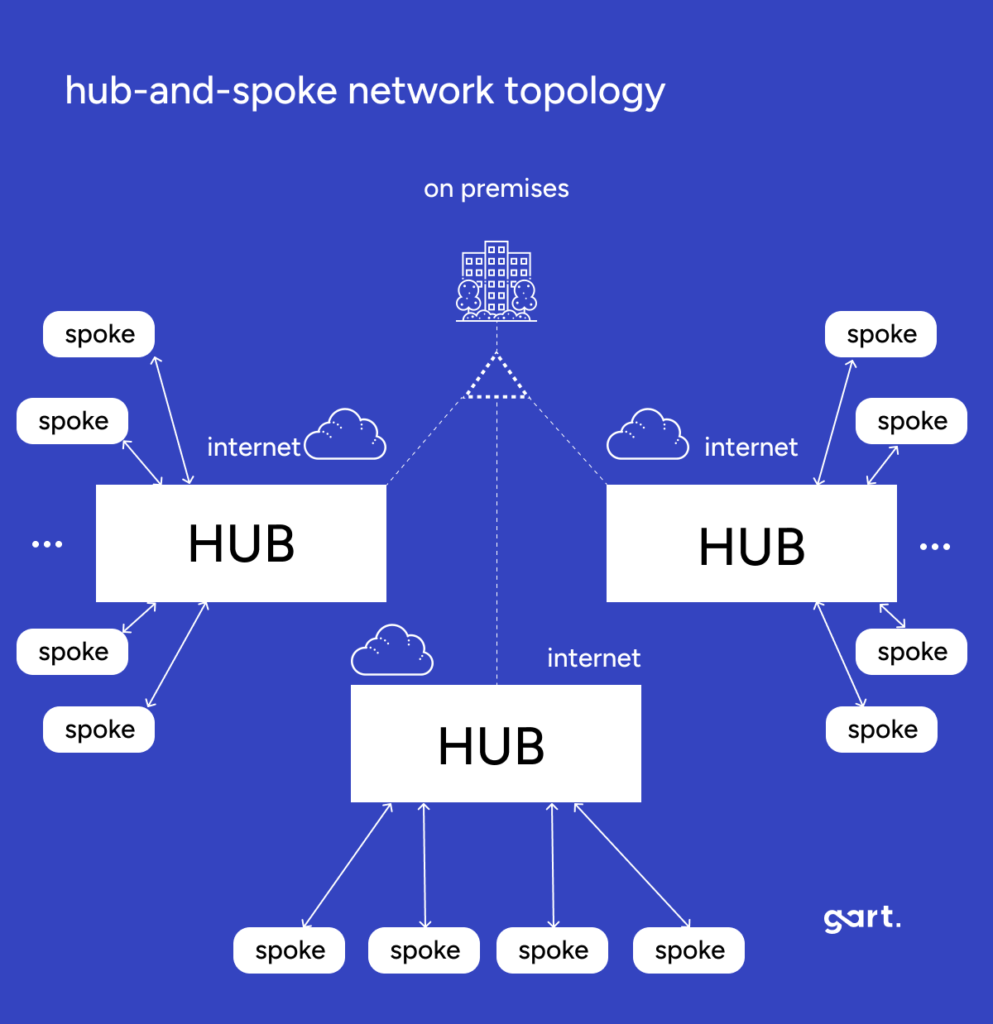
In AWS, the recommended approach to network design includes:
- Using Amazon VPC (Virtual Private Cloud) to create isolated network environments.
- Implementing AWS Transit Gateway for centralized routing management between VPCs and on-premises networks.
- Using AWS Control Tower for automated setup and management of multi-account environments.
- Applying AWS Network Firewall for centralized network protection.
Both providers emphasize the importance of segmentation, scalability, centralized management, and security – precisely those aspects that, when neglected, lead to the typical mistakes described in the article.
This is how leading cloud platforms address the problems associated with typical network design mistakes and offer structured approaches to creating effective network architecture. This ties in well with the common mistakes discussed earlier, such as:
- Flat network structure: Addressed by hub-and-spoke designs in Azure and VPC segmentation in AWS.
- Insufficient segmentation: Solved through spoke networks in Azure and separate VPCs in AWS.
- Ignoring scalability: Both platforms offer solutions that can easily scale with business needs.
- Suboptimal topology: The recommended architectures from both providers aim to optimize network topology.
- Lack of centralized management: Addressed by Azure Network Manager and AWS Control Tower.
Conclusion
Planning a network design from the beginning is crucial for any growing business. It ensures that the infrastructure can scale efficiently, maintain security, and support the company’s evolving needs. A well-designed network, guided by experienced DevOps engineers or cloud architects, can save businesses from costly reconfigurations and operational disruptions in the future.
See how we can help to overcome your challenges









